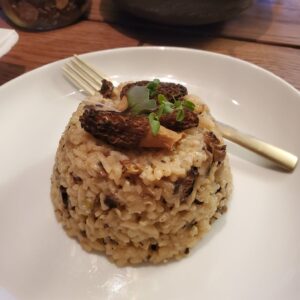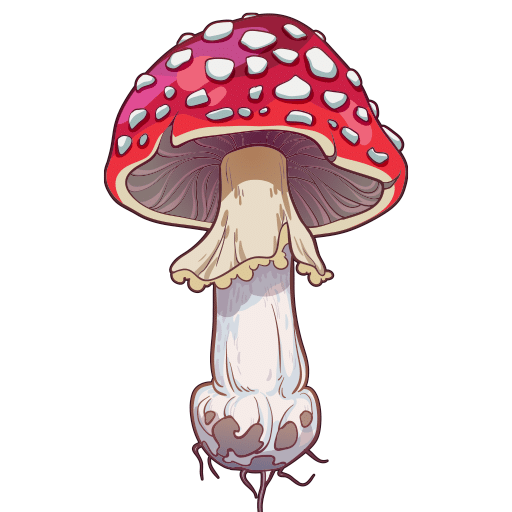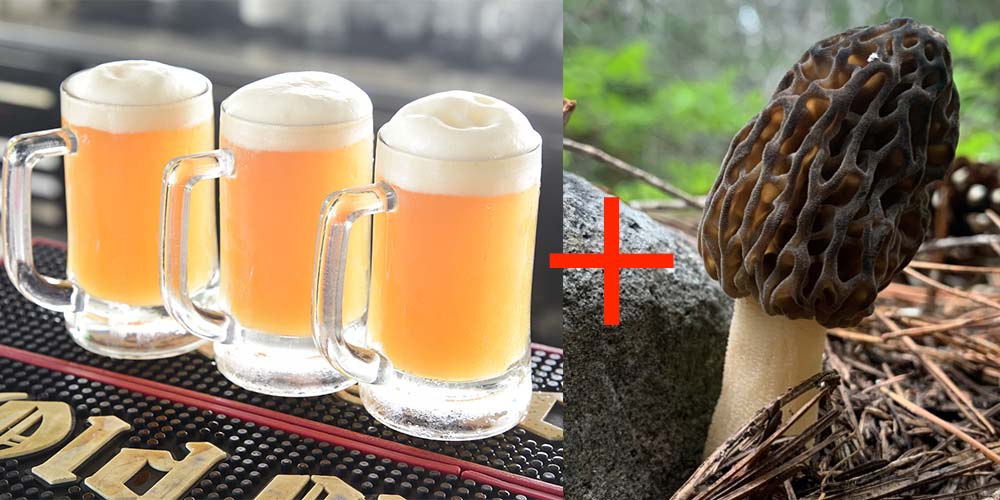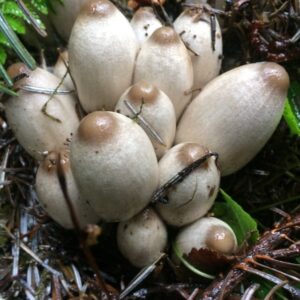Are morels poisonous with alcohol?
In short, for most people, no.
Most people can safely eat properly cooked morels with alcohol without adverse reactions. Nearly all morel poisonings are related to personal sensitivities, or eating raw/undercooked morels.
Many people experience adverse reactions to eating morels without alcohol. Thoroughly cooking significantly improves the edibility of morels however no mushroom is edible to everyone.
If you are concerned that you might be experiencing mushroom poisoning
Call your local poison center at (800) 222-1222
Morel Toxicity – Without Alcohol
There are many reports of reactions to eating morels without alcohol such as cramps, vomiting, and diarrhea. Edibility is a spectrum with mushrooms. Morels contain toxic compounds and thorough cooking significantly reduces the chances of a negative reaction.
Learn more about the toxins found in morels and other morel-like species here.
Morel Toxicity – With Alcohol
There are a small number of reports of adverse reactions to eating morels with alcohol. Michael Beug summarizes reports of mushroom poisonings in the US from 2018-2020 in this article for NAMA. Here he states, “For the hundreds of people who have eaten morels and consumed alcohol with the meal when I have been present, there has not been a single adverse reaction.”
Here is one from a 1964 edition of Mycologia. The author mentions that he and his family cooked morels for lunch. That evening he and his wife had a small amount of alcohol, while his 2 children who had consumed a similar amount of mushrooms did not. He and his wife became ill with diarrhea and/or vomiting shortly after consuming alcohol while his children suffered no ill effects.
Here is another article addressing morel toxicity with a short section on reactions when consumed with alcohol. These reactions included GI issues and cutaneous erythema; a sensation of lip swelling, palpitations, and in some of them vomiting and hypotension.
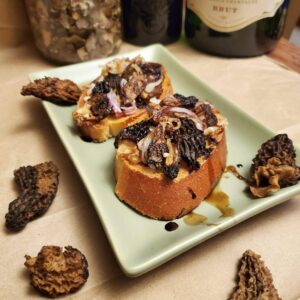
Read more about toxins found in morels and lookalikes
Edibility is not absolute
Many ‘edible’ mushrooms can contain compounds that can make you sick. Many mushrooms understood to be ‘poisonous’ are eaten safely by some people.
‘Edible mushrooms’ that have caused adverse reactions
- Chicken of the Woods (Laetiporus) – Cook low-and-slow to reduce potential for GI distress. 1 death reported
- Button Mushrooms (Agaricus bisporus) – allergy-like symptoms
- Shiitake (Lentinula edodes) – GI distress in some
- Chanterelle (Cantharellus spp) – GI distress, flushing
- Maitake (Grifola frondosa)
- Porcini (Boletus edulis)
‘Poisonous mushrooms’ that are often eaten safely
- Angel Wings (Pleurocybella porrigens) – Sometimes considered the poisonous look-alike to the popular oyster mushroom
- Verpa – Also known as the false morel, they actually have the same level of edibility/toxicity as true morels
- Fly Agaric (Amanita muscaria) – This is one of the most popular examples of a poisonous mushroom however there are no reliable examples of fatal poisonings. With the right preparation, it is eaten by some without ill-effect
- Scaly Chanterelle (Turbinellus floccosus) – Highly regarded by some, and considered toxic by others
How to avoid negative reactions when eating wild mushrooms
It starts with positive identification. It is common for a novice to mistakenly gather inedible species while collecting. This is even more likely when a group is gathering, or when one is collecting in a large patch of the target edible species that leads to the collector(s) becoming somewhat complacent with identification. The most concerning look-alike to morels in the Pacific Northwest is Gyromitra.

Alcohol and certain mushrooms can have serious effects
Some mushrooms are known to cause poisonings when consumed with alcohol. A section of the Coprinopsis genus called Atramentariae contain coprine. This chemical causes a buildup of toxic acetaldehyde when alcohol is ingested. Here is one mushroom in this group. Noah Siegel ID’d this as Coprinopsis acuminate. In one documented case, diners who consumed morels with alcohol had symptoms similar to coprine toxicity.
Another possible reason for negative reactions to morels could be unique to the individual. If you have not eaten morels before, try just a bite and wait 24 hours. This can help you determine any personal sensitivies or allergic reactions at a low dose.
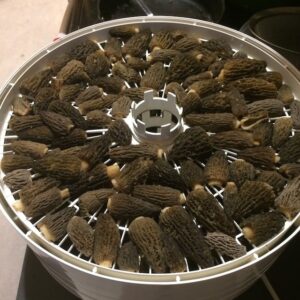
Eating wild mushrooms carries some risk. Here are some things that you can do to limit your risk of adverse effects from eating wild mushrooms.
- Gather many before eating any. This is easier said than done. The idea is that you should familiarize yourself with a mushroom well before trusting your identification
- Forage with intention. Choose mushrooms you want to forage. I think many of us have approached foraging as finding mushrooms, then determining if they are edible. This method can be overwhelming and risky. I suggest instead that you familiarize yourself with some key edible mushrooms and forage for those. When finding a mushroom outside of this list, use the experience to learn about the mushroom.
- Be comfortable asking questions. If you are eating wild mushrooms that someone else has foraged, don’t be afraid to ask a few questions about what mushrooms might look similar and how they differ. Questions like this are an excellent way to learn, but also to gauge the level of confidence the forager has with this species
- Cook all wild mushrooms until you know better. Many mushrooms have toxins or tissues that can cause some level of GI problems. Some of these toxins can be removed/denatured/broken down by cooking. Some will parboil certain mushrooms before cooking
- Be cautious but not afraid. Serious poisonings resulting in liver/kidney failure and even death are possible but quite rare. In the US there are on average about 50 serious poisonings per year resulting in 3 deaths. You are 10x more likely to die from a lightning strike than die from mushroom poisoning.
